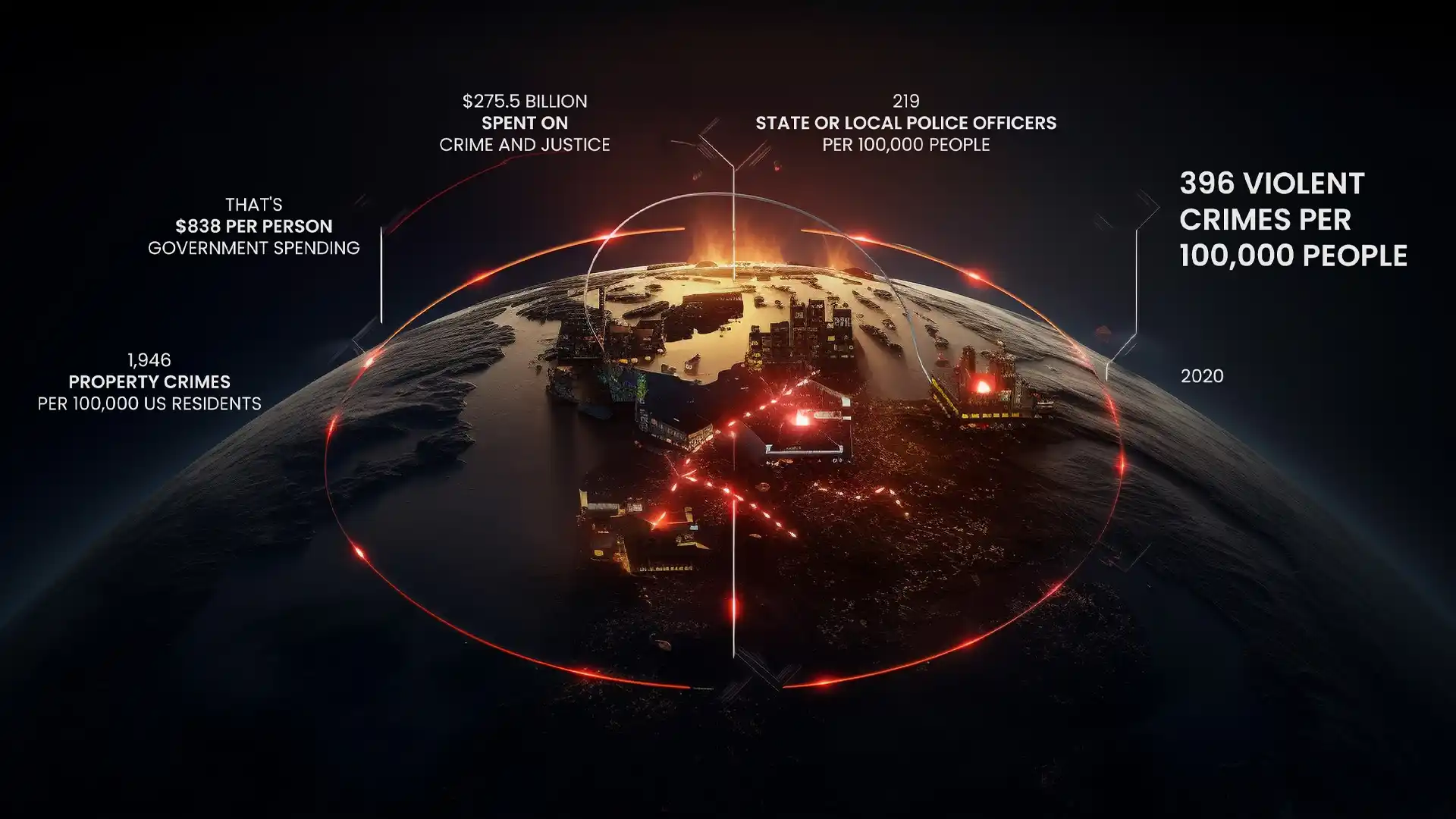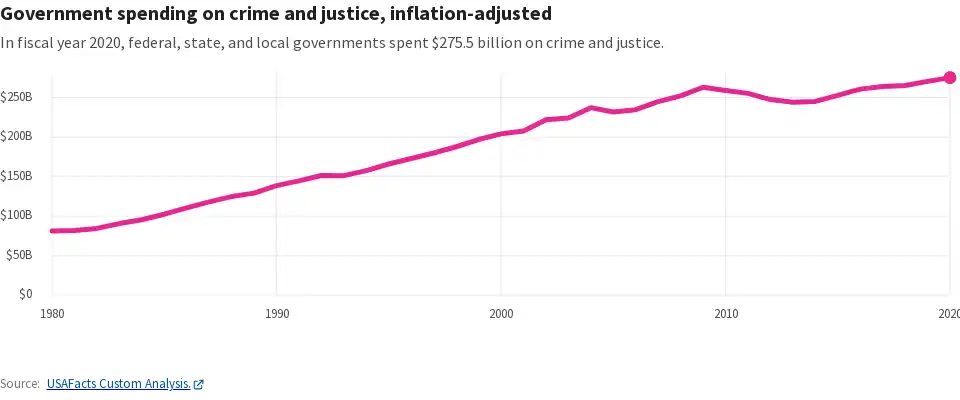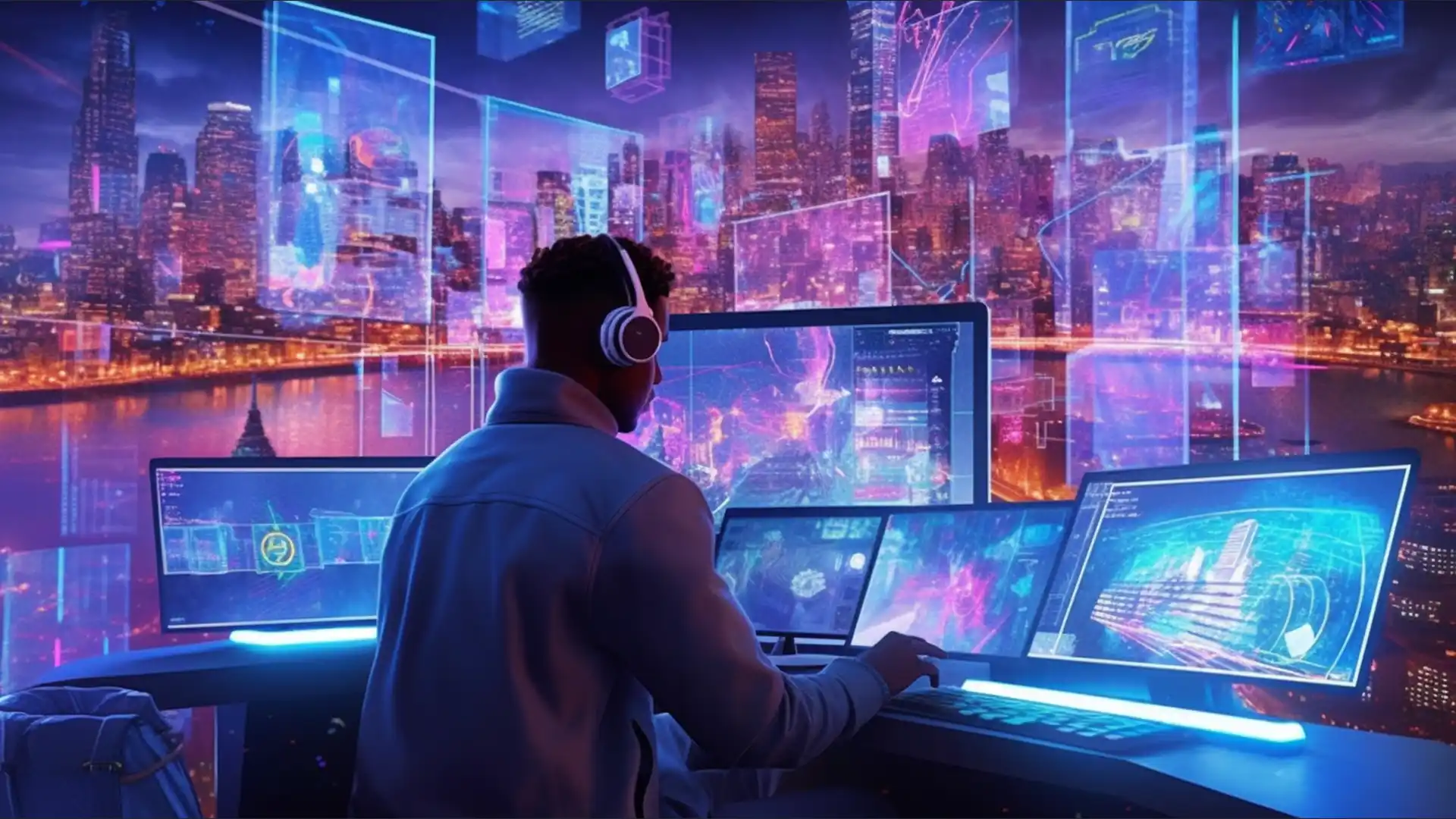Crime Watch
Understanding Crime Trends in the US

Welcome to our deep dive into the intriguing world of crime trends. You might be wondering, “Why should I care about crime trends?” Well, they're a lot more relevant to our everyday lives than we might think.
Understanding crime trends is like having a window into society's challenges and triumphs. It sheds light on the issues we face as a community, nation, and even globally. From socio-economic factors to the influence of technology, crime trends offer a fascinating, if at times sobering, insight into the human condition.
Think about it: When we know the trends, we can start to understand the ‘why' behind them. Why is a certain type of crime increasing? Why are other crimes decreasing? And most importantly, what can we do about it?
So, join me as we explore the landscape of crime trends. Let's uncover the stories they tell and unravel the mysteries they hold. Let's delve into the numbers, the statistics, the factors influencing crime, and the implications for all of us. It's a journey that might surprise you, challenge you, but above all, enlighten you. Ready? Let's get started!
Current Crime Trends in the US: What's Going On?

Now, let's take a closer look at what's happening in our own backyard – the United States. Crime rates and trends offer us a snapshot of our society at a given moment, a kind of societal ‘selfie' if you will. And what does this ‘selfie' show us?
The Lay of the Land: Crime Rates and Trends
In 2020, we had 396 violent crimes per 100,000 US residents, and a whopping 1,946 property crimes per 100,000 residents. Sounds like a lot, right? But here's the interesting part – while the numbers seem to fluctuate from year to year, our violent crime rate is actually lower now than in the 1990s.
Unpacking Violent and Property Crimes
Violent crimes and property crimes – they're terms we hear a lot, but what do they really mean? Violent crimes typically involve force or threat of force, think robbery or assault. Property crimes, on the other hand, involve theft or damage to property, like burglary or vandalism. In 2020, for every violent crime committed, there were almost five property crimes. It seems our belongings are taking quite a hit!
A Pandemic Impact: Correctional Populations
Here's something you might not have expected. The COVID-19 pandemic actually had an impact on our correctional populations. In 2021, we saw the number of people under incarceration or community supervision drop to its lowest level since the mid-1990s. That's a significant shift! Perhaps the pandemic, in all its disruption, made us reevaluate our approaches to correctional practices.
So, that's the current state of affairs in the US. It's a mix of progress and challenges, as we navigate the complex dynamics of crime in our society. But remember, understanding these trends is the first step towards making a positive change. Onwards we go!
Check out our article on ‘6 Essential Safety Tips for Crime Prevention While Living Alone.' It provides practical tips and guidance to help you create a secure living environment.
The Economics of Crime: Following the Money

Let's now dive into a topic that might seem a bit unexpected in a conversation about crime – economics. You see, crime doesn't just affect our safety, it also impacts our wallets, and it influences how we as a society allocate our resources. Let's crunch some numbers, shall we?
What's the Price Tag? The Cost of Crime and Justice in the US
In fiscal year 2020, the cost of crime and justice in the US reached a staggering $275.5 billion. That's about $838 per person! This figure covers everything from police salaries to prison maintenance to court proceedings. It's a sobering reminder of the financial burden that crime places on society.
The Socio-Economic Chessboard: How Factors Influence Crime Rates
But what about the role of socio-economic factors in crime rates? Studies have shown a complex relationship between these factors and crime. For instance, factors like poverty, income inequality, and unemployment can influence crime rates in different ways at different times.
Digging Deeper: Poverty, Income Inequality, and Unemployment
Let's take a closer look at some of these factors. Poverty, for instance, can create circumstances where crime may seem like the only option for survival. Income inequality can lead to feelings of resentment and frustration, which may manifest as criminal behavior. Unemployment, too, can push individuals towards crime as a means of financial support. However, the relationship is not always straightforward. Sometimes, these factors might lead to increased crime rates, while at other times they might not, depending on a variety of circumstances.
The economics of crime is a vast and complex field, but it's clear that our wallets are just as tied to crime as our safety. As we work towards a safer society, let's remember that it's not just about law enforcement, but also about addressing the economic factors that drive crime. After all, a safer society is also a more prosperous one!
Looking to further explore the power of community engagement in crime prevention? Check out our comprehensive guide, “Community Engagement in Crime Prevention,” where we delve into the various aspects of community involvement, its benefits, and effective strategies for creating safer neighborhoods.
The Role of Technology in Crime and Justice: A Double-Edged Sword
Now, let's shift our focus to a different aspect of crime and justice. We're all living in the digital age, right? And just as technology is transforming our everyday lives, it's also reshaping the landscape of crime and justice. But is it all for the good? Let's find out.
The Crystal Ball of Law Enforcement: Big Data and Predictive Policing
Have you ever heard of predictive policing? It's not some sci-fi concept from a dystopian novel, it's happening right here and now. Law enforcement agencies are using big data and analytics to pinpoint people, places, and times at an increased risk for crimes. It's almost like they have a crystal ball! But like all powerful tools, it comes with its own set of challenges. How do we ensure its fair use? How do we protect privacy while maximizing efficiency? These are questions that we need to answer as we move forward.
Challenges and Opportunities: Integrating Technology in Law Enforcement
Integrating technology in law enforcement isn't as easy as flipping a switch. It's a complex process with many hurdles. Things like a lack of clear business cases, lack of proper implementation plans, and concerns over security and privacy can all hamper the adoption of new technologies. But despite these challenges, there's a ton of potential here. With the right approach, we can use technology to enhance public safety, improve community relations, and make our justice system more efficient and fair.
To further explore the impact of social media and the media on crime, check out our informative article, “How can social media and the media influence crime?” Discover the complexities of this relationship and learn about the potential effects of media coverage and social media platforms on crime rates and public perception. Gain a deeper understanding of the interplay between media, technology, and criminal behavior. Click here to access the full article and uncover the influence of social media and the media on crime.
The Rising Wave: Firearm-Related Background Checks
In a different corner of the tech world, we're seeing a rise in firearm-related background checks. In 2022, there were 30.9 million of these checks completed. This surge in background checks is a testament to how technology is making it easier to enforce regulations and ensure public safety.
So, is technology a friend or foe in the world of crime and justice? Well, like most things in life, it's not black and white. It's a powerful tool that can help us a lot, but only if we use it wisely. As we continue to navigate the digital age, let's make sure that we're using technology to build a safer and more just world.
While understanding crime trends is crucial, it's equally important to protect yourself in the digital realm. Discover practical strategies and effective measures to safeguard yourself from cybercrime by reading our informative article, “How to Protect Yourself from Cybercrime.” Learn about the latest cyber threats, explore preventive steps, and gain insights into best practices for online safety. By combining your knowledge of crime trends with proactive cybersecurity measures, you can enhance your overall personal security
In Conclusion: A Complex Puzzle
As we've seen, the world of crime and justice is like a huge, complex puzzle. Each piece, from the socio-economic factors influencing crime rates to the role of technology in law enforcement, fits together to create a picture of society as we know it.
The costs of crime are staggering, with billions being spent each year on crime and justice. And while socio-economic factors play a significant role in crime rates, it's clear that poverty, income inequality, and unemployment are not the only factors at play. It's a complex web of influences that we're still trying to fully understand.
Technology, with all its promises and pitfalls, is playing an increasingly important role in our justice system. From predictive policing to firearm-related background checks, it's changing the way we approach crime prevention and enforcement. But with great power comes great responsibility. We need to ensure that as we embrace these new tools, we're also safeguarding privacy, civil rights, and the integrity of our justice system.
As we continue to navigate this complex landscape, let's keep the conversation going. Understanding crime and justice is not just the responsibility of law enforcement or policy makers. It's up to all of us. Because in the end, a safer and more just world benefits everyone.
Thanks for joining me on this journey. Remember, knowledge is power. The more we know, the more we can do to make a difference.
Don't miss a beat in the world of crime analysis. Head over to our “Crime Watch” section where you'll get up-to-the-minute updates on crime stories that are shaping our society. Stay informed, stay ahead, and join the conversation as we delve deep into the heart of crime-related news. Remember, knowledge is power – and in this case, it's your first line of defense.










